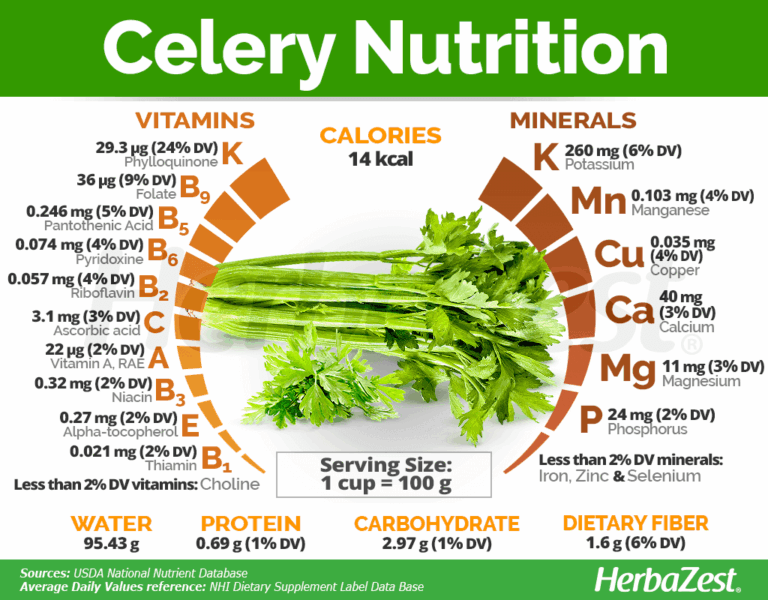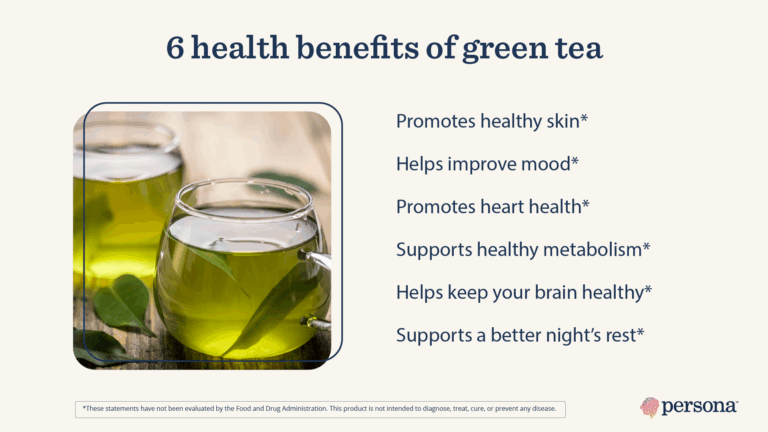The Daily Dose: How Much Spinach You Should Eat for Optimal Health
For generations, the image of Popeye the Sailor Man flexing his muscles after downing a can of spinach has been etched into our collective consciousness. It’s a simple, cartoonish allegory for a profound truth: spinach is incredibly good for you. Yet, beyond the charmingly exaggerated tales of superhuman strength, a more nuanced and scientifically backed question persists: How much spinach should we really eat for optimal health?
This isn’t a simple question with a single, universal answer. "Optimal health" is a dynamic target, shifting with individual needs, lifestyle, and existing health conditions. But by delving into the remarkable nutritional profile of Spinacia oleracea, exploring its myriad health benefits, understanding the nuances of its consumption, and acknowledging potential considerations, we can chart a course towards truly harnessing its power. This is a story not just about a leafy green, but about the intricate dance between nature’s bounty and our body’s quest for well-being.
The Nutritional Symphony: Why Spinach Reigns Supreme
Before we discuss quantity, let’s appreciate the quality. Spinach is not just a vegetable; it’s a miniature pharmacy, a nutritional architect, and a silent guardian of health, packed into delicate, verdant leaves. Its nutrient density is astounding, offering a vast array of vitamins, minerals, and phytonutrients for very few calories.
Vitamins at the Forefront:
- Vitamin K1 (Phylloquinone): This is perhaps spinach’s most celebrated vitamin. A single cup of raw spinach provides well over 100% of the daily recommended intake. Vitamin K1 is crucial for blood clotting (hence its interaction with certain medications, which we’ll discuss later). More importantly for long-term health, it plays a vital role in bone health by activating osteocalcin, a protein that helps bind calcium to the bone matrix.
- Vitamin A (Beta-Carotene): Spinach is rich in beta-carotene, which the body converts into Vitamin A. This powerful antioxidant is indispensable for vision (especially in low light), immune function, and healthy skin and mucous membranes.
- Vitamin C (Ascorbic Acid): While not as high as citrus fruits, spinach still contributes a good amount of Vitamin C, a potent antioxidant that supports immune health, collagen synthesis for skin and connective tissues, and enhances iron absorption.
- Folate (Vitamin B9): Critical for cell growth and function, folate is essential for DNA synthesis and repair. It plays a crucial role in preventing neural tube defects during pregnancy and is involved in the metabolism of homocysteine, an amino acid linked to cardiovascular disease risk.
Minerals that Matter:
- Iron: Spinach is famously known for its iron content. While it’s non-heme iron (less bioavailable than heme iron from animal sources), its absorption can be significantly enhanced when consumed with Vitamin C-rich foods. Iron is vital for oxygen transport in the blood (as part of hemoglobin) and for energy production.
- Magnesium: An essential mineral involved in over 300 biochemical reactions in the body, magnesium supports muscle and nerve function, blood glucose control, blood pressure regulation, and bone health.
- Potassium: An electrolyte that balances fluids in the body, potassium is critical for maintaining healthy blood pressure and supporting heart function.
- Manganese: A trace mineral important for bone formation, metabolism, and antioxidant defense.
Phytonutrients: The Unsung Heroes:
Beyond the standard vitamins and minerals, spinach is a treasure trove of phytonutrients – plant compounds with powerful health-promoting properties.
- Lutein and Zeaxanthin: These two carotenoids are superstars for eye health. They accumulate in the macula of the eye, acting as natural sunscreens and filtering harmful blue light, thereby protecting against age-related macular degeneration (AMD) and cataracts.
- Quercetin and Kaempferol: These flavonoids are potent antioxidants and anti-inflammatory compounds. They have been studied for their potential roles in cancer prevention, cardiovascular health, and neuroprotection.
- Nitrates: Spinach is one of the richest dietary sources of nitrates. Once consumed, nitrates are converted into nitric oxide (NO) in the body. Nitric oxide is a powerful vasodilator, meaning it relaxes and widens blood vessels, leading to improved blood flow and lower blood pressure.
- Alpha-Lipoic Acid: Though present in smaller amounts, this antioxidant has been linked to improved blood sugar control and nerve health.
- Chlorophyll: The pigment that gives spinach its green color, chlorophyll has antioxidant properties and may help detoxify the body.
This intricate blend of nutrients creates a synergistic effect, where the whole is greater than the sum of its parts, paving the way for spinach’s impressive array of health benefits.
The Health Benefits Unveiled: A Guardian of Well-being
With such a robust nutritional profile, it’s no surprise that regular spinach consumption is linked to a multitude of health advantages, addressing some of the most pressing health concerns of our time.
1. Bone Health: Fortifying Your Framework
As mentioned, Vitamin K1 is paramount for bone integrity. It activates osteocalcin, a protein that helps integrate calcium into the bone matrix, making bones stronger and less susceptible to fractures. Magnesium also contributes by aiding in calcium absorption and regulating parathyroid hormone, which is involved in bone metabolism. Given the rising prevalence of osteoporosis, particularly in aging populations, spinach emerges as a vital dietary ally in maintaining skeletal strength throughout life.
2. Eye Health: Protecting Your Vision
The dynamic duo of lutein and zeaxanthin positions spinach as a top food for ocular health. These carotenoids migrate to the macula, the central part of the retina responsible for sharp, detailed vision. Here, they absorb harmful blue light and neutralize free radicals, acting as an internal pair of sunglasses. Research consistently demonstrates that a diet rich in these compounds can significantly reduce the risk of age-related macular degeneration (AMD) and cataracts, two leading causes of vision impairment and blindness.
3. Cardiovascular Health: A Heart’s Best Friend
Spinach offers a multifaceted approach to cardiovascular protection.
- Blood Pressure Regulation: Its high nitrate content converts to nitric oxide, a potent vasodilator that relaxes blood vessels, improving blood flow and reducing blood pressure. Potassium, abundant in spinach, further aids in blood pressure control by counteracting the effects of sodium. Magnesium also contributes to muscle relaxation, including that of blood vessel walls.
- Cholesterol Management: The fiber in spinach helps lower LDL ("bad") cholesterol levels by binding to bile acids and promoting their excretion.
- Homocysteine Reduction: Folate helps convert homocysteine into other amino acids, reducing its levels. Elevated homocysteine is an independent risk factor for heart disease and stroke.
- Antioxidant Protection: The myriad antioxidants (Vitamin C, beta-carotene, flavonoids) combat oxidative stress, which is a major contributor to arterial damage and atherosclerosis.
4. Cancer Prevention: A Shield Against Cellular Damage
The robust antioxidant and anti-inflammatory properties of spinach make it a powerful agent in cancer prevention.
- Free Radical Scavenging: Antioxidants like beta-carotene, Vitamin C, quercetin, and kaempferol neutralize free radicals, unstable molecules that can damage DNA and initiate cancer development.
- Anti-inflammatory Effects: Chronic inflammation is a known precursor to cancer. Spinach’s anti-inflammatory compounds help quell this process.
- Chlorophyll and Carotenoids: Studies suggest that chlorophyll and other carotenoids may inhibit the growth of certain types of cancer cells and protect against carcinogen-induced DNA damage. Research has explored spinach’s potential in colon, breast, and prostate cancer prevention.
5. Brain Health and Cognitive Function: Fueling Your Mind
The benefits of spinach extend to the brain.
- Enhanced Blood Flow: The nitric oxide derived from nitrates improves cerebral blood flow, ensuring the brain receives adequate oxygen and nutrients.
- Neuroprotection: Antioxidants protect brain cells from oxidative damage, a factor in neurodegenerative diseases.
- Folate and Cognition: Folate is essential for neurotransmitter synthesis and overall brain function. Adequate folate intake has been associated with better cognitive performance and a reduced risk of cognitive decline.
- Vitamin K’s Role: Emerging research suggests Vitamin K might play a role in brain health, particularly in memory and learning.
6. Digestive Health: Promoting Gut Harmony
Spinach is a good source of dietary fiber, which is essential for a healthy digestive system. Fiber adds bulk to stool, preventing constipation and promoting regular bowel movements. It also acts as a prebiotic, feeding beneficial gut bacteria, which is crucial for overall gut health and immune function.
7. Weight Management: A Low-Calorie Powerhouse
For those looking to manage their weight, spinach is an ideal food. It’s extremely low in calories (just 7 calories per cup of raw spinach) but high in volume and fiber, which promotes satiety and helps you feel full without overeating.
- Thylakoids: Interestingly, research has also identified compounds called thylakoids in spinach, which may help suppress appetite and reduce cravings by influencing hormone levels related to hunger and fullness.
8. Skin and Hair Health: Radiance from Within
The Vitamin A in spinach is crucial for healthy skin, promoting cell turnover and repair. Vitamin C aids in collagen production, maintaining skin elasticity and youthfulness. The antioxidants protect skin cells from environmental damage, contributing to a healthy, radiant complexion and stronger hair.
The Elusive "Daily Dose": How Much is Optimal?
Now, to the heart of the matter: the "how much." Unlike a pharmaceutical drug with a precise dosage, the optimal intake of spinach is more fluid, influenced by various factors.
General Guidelines and Recommendations:
Most dietary guidelines, such as those from the USDA, recommend consuming 2-3 cups of vegetables daily for adults. Leafy greens like spinach are often highlighted as priority choices. For spinach specifically:
- Raw Spinach: A common recommendation for a beneficial intake is 1-2 cups of raw spinach per day. This amount provides a substantial boost of vitamins, minerals, and phytonutrients without overdoing it.
- Cooked Spinach: Spinach significantly reduces in volume when cooked. One cup of cooked spinach is equivalent to roughly 6-8 cups of raw spinach. Therefore, 1/2 to 1 cup of cooked spinach daily would be a substantial and highly beneficial intake.
Why the Discrepancy (Raw vs. Cooked) and Bioavailability:
This brings us to a crucial point: the impact of cooking on spinach’s nutrients and their bioavailability.
- Volume Reduction: Raw spinach is bulky. A large salad might contain 2-3 cups of raw leaves. When cooked, this same amount shrinks dramatically. This means it’s much easier to consume a larger nutritional equivalent of spinach when it’s cooked.
- Oxalates: Spinach contains oxalic acid (oxalates), which can bind to minerals like calcium and iron, reducing their absorption. Oxalates are also a concern for individuals prone to kidney stones. Cooking spinach (steaming, boiling, sautéing) significantly reduces its oxalate content – by 30-87% depending on the method. This makes the minerals more bioavailable.
- Heat Sensitivity: Some nutrients, like Vitamin C and certain B vitamins, are somewhat heat-sensitive and can be partially degraded during cooking. However, fat-soluble vitamins (A, K) and carotenoids (lutein, zeaxanthin) often become more bioavailable when spinach is lightly cooked and consumed with a little fat (e.g., olive oil in a sauté). This is because heat helps break down cell walls, releasing these nutrients for better absorption, and fat aids their transport.
- Nitrates: The nitrate content of spinach is generally stable with light cooking, but prolonged boiling might lead to some leaching into the cooking water.
The "Optimal" Zone: Balancing Benefits and Considerations
For most healthy individuals, aiming for 1-2 cups of raw spinach daily, or 1/2 to 1 cup of cooked spinach daily, seems to strike an excellent balance. This consistent intake ensures a steady supply of its powerful nutrients, allowing the body to leverage its anti-inflammatory, antioxidant, and protective properties over time.
However, "optimal" can also mean:
- More for Specific Goals: If you’re intensely focused on increasing nitrate intake for athletic performance (e.g., endurance athletes) or blood pressure management, you might lean towards the higher end of the spectrum, or even slightly beyond, but always with awareness of other dietary factors.
- Less for Specific Conditions: For individuals with certain health conditions, the "optimal" amount might be lower or require specific preparation methods.
Navigating the Nuances: Important Considerations and Caveats
While spinach is overwhelmingly beneficial, a "knowledgeable audience" understands that no food is without its considerations.
1. Oxalates and Kidney Stones:
This is the most significant caveat for spinach consumption. Spinach is high in oxalates. For most healthy individuals, consuming spinach in moderation (as suggested above) does not pose a problem. However, individuals with a history of calcium oxalate kidney stones are often advised to limit high-oxalate foods, including spinach.
Strategies to Mitigate Oxalate Concerns:
- Cook it: As mentioned, cooking significantly reduces oxalate content. Discarding the cooking water is also helpful if boiling.
- Pair with Calcium: Consuming spinach with calcium-rich foods (e.g., dairy, fortified plant milk, sesame seeds) can help. Calcium binds to oxalates in the digestive tract, forming an insoluble salt that is then excreted, preventing the oxalates from being absorbed and reaching the kidneys.
- Stay Hydrated: Drinking plenty of water helps dilute urine and flush out potential stone-forming compounds.
- Variety: Don’t rely solely on spinach for your greens. Rotate with other low-oxalate greens like kale, collard greens, bok choy, and lettuce.
2. Vitamin K and Blood Thinners (Anticoagulants):
This is a critical interaction. Spinach is exceptionally high in Vitamin K1, which plays a central role in blood clotting. Individuals taking anticoagulant medications like Warfarin (Coumadin) must maintain a consistent intake of Vitamin K. Sudden, drastic changes in Vitamin K consumption (either increasing or decreasing) can interfere with the medication’s effectiveness, leading to dangerous clotting or bleeding.
- Consult Your Doctor: If you are on Warfarin, it is absolutely essential to discuss your spinach intake (and all Vitamin K-rich foods) with your healthcare provider. They will advise you on appropriate amounts and monitor your blood clotting times (INR) accordingly. The goal is consistency, not avoidance, unless specifically advised. Newer anticoagulants (NOACs/DOACs) like rivaroxaban or apixaban generally have fewer dietary interactions with Vitamin K, but always confirm with your doctor.
3. Pesticide Residues:
Spinach consistently ranks high on the Environmental Working Group’s (EWG) "Dirty Dozen" list, meaning it often contains significant pesticide residues.
- Organic Option: If concerns about pesticides are high, choosing organic spinach is a viable solution.
- Washing: Thoroughly washing conventional spinach under running water can help reduce surface pesticide residues, though it won’t remove systemic pesticides.
4. Goitrogens (Thyroid Health):
Spinach is considered a goitrogenic food, meaning it contains compounds that can interfere with thyroid function, particularly if consumed in very large amounts and if iodine intake is insufficient. However, for most individuals with healthy thyroid function and adequate iodine intake, the amounts of goitrogens in spinach are not a concern. Cooking also significantly reduces goitrogenic compounds.
Beyond the Bowl: Creative Integration into Your Daily Diet
The beauty of spinach lies not just in its nutritional prowess but also in its incredible versatility. Incorporating your daily dose doesn’t have to be a chore; it can be a culinary adventure.
- The Power Smoothie: A handful or two of raw spinach disappears effortlessly into fruit smoothies. The mild flavor is easily masked by berries, banana, or other fruits, making it an excellent stealth health booster.
- Salad Base: Ditch the iceberg lettuce! Use spinach as the foundation for vibrant salads, pairing it with other vegetables, lean proteins, nuts, seeds, and a healthy vinaigrette.
- Sautéed Side Dish: Lightly sautéed with garlic and a drizzle of olive oil, spinach makes a quick, flavorful, and nutrient-dense side dish for almost any meal. Remember, cooking reduces oxalates and increases the bioavailability of certain nutrients.
- Hidden in Sauces and Soups: Stir chopped spinach into pasta sauces, stews, chilis, and soups during the last few minutes of cooking. It wilts quickly and blends seamlessly.
- Egg Dishes: Add a handful of spinach to your morning omelets, scrambled eggs, frittatas, or quiches for an instant nutritional upgrade.
- Sandwiches and Wraps: Layer fresh spinach leaves into your sandwiches, wraps, or quesadillas for added crunch and nutrients.
- Baked Goods (Surprisingly!): For the truly adventurous, a small amount of pureed spinach can be added to savory muffins or even certain sweet treats (like green pancakes or waffles) for a nutrient boost without significantly altering flavor.
- Stir-fries: Spinach is a perfect addition to stir-fries, added at the very end to wilt.
- Pesto: Substitute some or all of the basil in traditional pesto with spinach for a different flavor profile and an extra nutrient punch.
Conclusion: Embracing the Green Gold
The story of spinach is far richer and more complex than Popeye ever let on. It is a testament to the profound power of whole foods, a veritable green goldmine of nutrients capable of supporting virtually every system in the human body.
While there’s no single, magic "daily dose," aiming for 1-2 cups of raw spinach or 1/2 to 1 cup of cooked spinach most days of the week provides a robust and consistent intake of its beneficial compounds. For most healthy individuals, this amount is safe, highly effective, and easily achievable.
However, a truly knowledgeable approach to optimal health involves understanding the nuances: the role of oxalates, the critical interaction with certain medications, and the value of varying your greens. By cooking spinach, pairing it with calcium, staying hydrated, and rotating it with other nutrient-dense vegetables, you can maximize its benefits while minimizing potential concerns.
Ultimately, spinach is more than just a vegetable; it’s an invitation to a healthier, more vibrant life. So, listen to the wisdom of the ages (and the scientists), embrace this leafy marvel, and let its daily dose contribute to your optimal health journey, one delicious green bite at a time.







